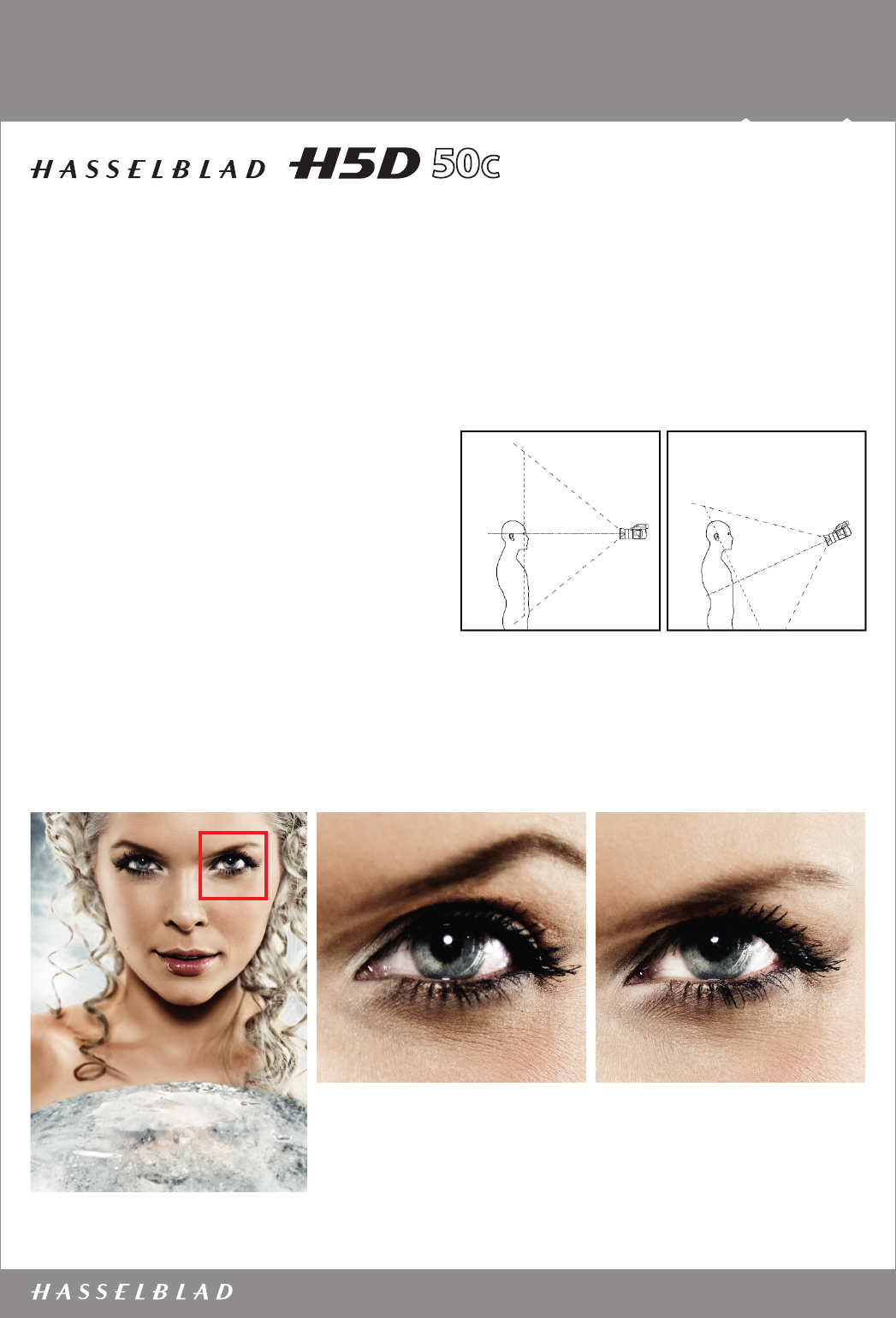
DIGITAL CAMERAS
www.hasselblad.com
Wi-Fi
The plane of focus changes when the camera is tilted for composition.
True Focus and Absolute Position Lock
True Focus helps solve one of the most lingering challenges that
faces serious photographers today: true, accurate focusing through-
out the image eld. Without multi-point auto-focus a typical auto-
focus camera can only correctly measure focus on a subject that
is in the center of the image. When a photographer wants to focus
on a subject outside the center area, they have to lock focus on the
subject and then re-compose the image. In short distances espe-
cially, this re-composing causes focus error, as the plane of focus
sharpness follows the camera’s movement, perpendicular to the
axis of the lens.
The traditional solution for most DSLR
cameras
has been to equip
the camera with a multi-point AF sensor. These sensors allow the
photographer to x an off-center focus point on an off-center sub-
ject, which is then focused correctly. Such multi-point AF solutions
are often tedious and inexible to work with. Due to the physics of
an SLR-camera, the off-center focus points that are offered are all
clustered relatively close to the center of the image. To set focus
outside of this center area, the photographer is still forced to focus
rst, and then shift the camera to reframe, with the resulting loss
of focus as a result.
To overcome this problem, Hasselblad has used modern yaw rate
sensor technology to measure angular velocity in an innovative
way. The result is the new Absolute Position Lock (APL) processor,
which forms the foundation of Hasselblad’s True Focus feature.
The APL processor accurately logs camera movement during any
re-composing, then uses these exact measurements to calculate
the necessary focus adjustment, and issues the proper commands
to the lens’s focus motor so it can compensate. The APL processor
computes the advanced positional algorithms and carries out the
required focus corrections at such rapid speed that no shutter lag
occurs. The H5D’s rmware then further perfects the focus using
the precise data retrieval system found on all H System lenses.
The middle image shows the result when not using True Focus. While this image looks relatively sharp,
the rightmost image where True Focus has been used, is razor sharp.
Photo: Marcel Pabst










